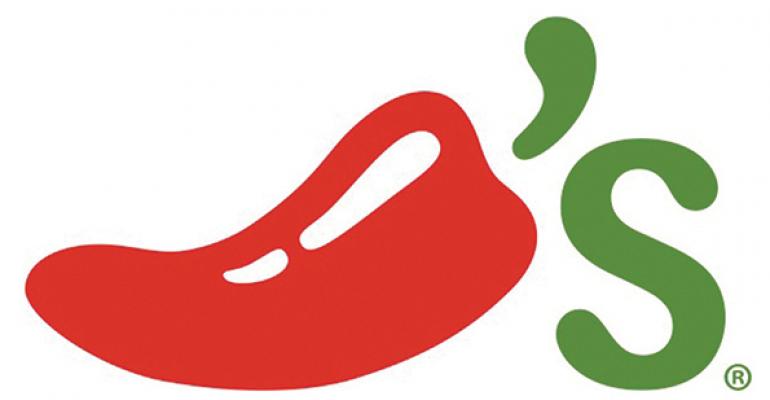Chili’s Grill & Bar has been testing a menu with 20 percent fewer items for two quarters and is set to launch it nationwide in summer, executives at parent Brinker International Inc. said Tuesday.
And some Chili’s units are testing an even more streamlined menu, said Wyman Roberts, Brinker president and CEO, in a third-quarter earnings call with analysts.
“We’re already testing additional deletions as we continue to meet the needs of our target consumer,” Roberts said, adding later in the call that “we think we can take the menu down even greater.”
The reduced-item menu should be introduced systemwide in the company’s first quarter, which begins the last week of June.
“Our guests have made their feedback clear,” Roberts said. “Their dining experience needs to be faster. The food needs to be hotter. And they still want high quality product at a great value.”
To meet those consumer requirements, Roberts said the brand is “clearing the decks for operators to make it easier for them to deliver.” The reduced-item menu has resulted in “better food delivered faster while decreasing in-house labor.”
The Chili’s division of Dallas-based Brinker has recently made several other modifications in its menu. Roberts said the kitchens now use smashed-patty cooking to produce a juicier burger. Units have moved to stainless tray serviceware for burgers and its new Smokehouse Combos, and Roberts said the trays were easier to clean and don’t break.
Chili’s has also expanded its Chicken Crisper flavors and this week is upgrading its fajitas with nearly 50 percent more protein and rice and beans with every entrée.
“We’re concentrating innovation or core menu,” Roberts said. “We’re simplifying execution.”
The company said average check has risen to $15.20, up from $14.73 in the same quarter last year.
Chili’s has also moved away from limited-time offers to focus on the value in the core menu, Roberts said.
“From a value perspective, we believe limited-time offers are not the best way to drive our business,” he said. “They increase complexity for operations and add confusion for guests.”
As part of Chili’s efforts to speed service, Chili’s is also testing new technologies, such as waiter handheld devices.
Joe Taylor, Brinker’s interim chief financial officer, said the company sees opportunities in to-go sales, which now make up 10.5 percent to 11 percent of the brand’s total sales.
Taylor said a new takeout test, in partnership with Olo, relies heavily on the mobile app.
“It includes the ability to mobile pay,” he said. “As we continue to expand that test, we are seeing good results in the way the guest is reacting that new and enhanced capability.”
Roberts said the test allows customers to order, pay and alert the restaurant when they are in the parking lot, all through the smartphone app. That should launch widely at the end of the fiscal year, he said.
For the third quarter ended March 29, Brinker reported that income declined 26.3 percent to $42.4 million, or 86 cents a share, from $57.5 million, or $1 a share, in the same quarter last year. Revenues slipped 1.7 percent to $810.6 million from $824.6 million in the prior-year period.
Same-store sales for all of Brinker’s restaurants were down 2.2 percent in the third quarter with a 2.3 percent decline at company-owned Chili’s and a 1.6 percent slide at Maggiano’s Little Italy. Franchised Chili’s same-store sales were down 2.5 percent in the quarter. Traffic at company-owned Chili’s was down 6.2 percent in the quarter and down 5.4 percent at Maggiano’s.
As of March 29, Brinker owned and franchised 1,660 restaurants, including 1,608 Chili’s and 52 Maggiano’s.
Contact Ron Ruggless at [email protected]
Follow him on Twitter: @RonRuggless





